The Best Video Game Period Pieces
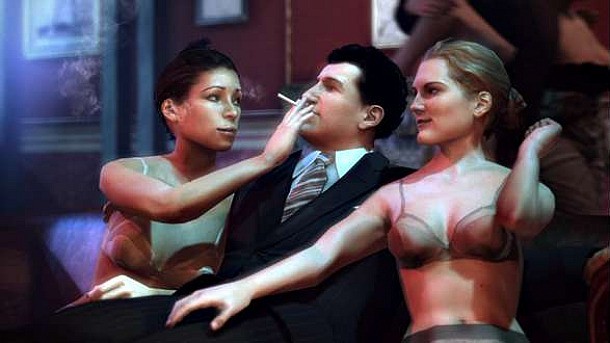
Movies have embraced period pieces since the beginning of the medium – from historical costume dramas to gangster epics, Hollywood has always made good use of a wide variety of eras. While games are beginning to rival film in terms of production value and storytelling, the industry is still largely tied to a small handful of settings – primarily modern military combat, Tolkien-derived fantasy, and science fiction.
It’s a shame, because – perhaps better than any other medium – video games are capable of not only telling a vivid period story, but entirely recreating long past cultures and time periods.
This list represents the best of the game industry’s efforts and mining the rich subject matter of human history. Hopefully, the success of these games will show that gamers are willing to embrace subject matter that beyond space marines and M16s.
Note: I’ve left off a couple of games that I think many would have expected to be on the list. The most notable is BioShock. BioShock is an amazing game, due in no small part to its amazing art deco architecture and period vibe. However, it’s more of an “alternate history” than a period. Rapture never existed (though it may someday), and thus it’s not really a period piece. Another series I left off was Destroy All Humans, which has mined the ‘50s and ‘60s, but obviously more as a tribute to the cheesy pulp sci-fi and horror films of that era. Basically, a spaceship disqualifies your game from being a period piece.
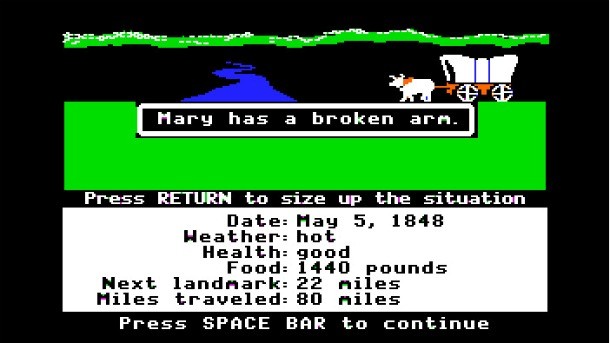
Oregon Trail
Publisher: MECC
Release Date: 1971
This is the granddaddy of video game period pieces. For many schoolchildren in the U.S. in the ‘70s and ‘80s, MECC’s Oregon Trail was not only their introduction to historically themed video games, but video games in general. Using text and primitive graphics, this computer game allowed you to step into the boots of an American pioneer making the treacherous journey west to settle in Oregon. You and your family loaded up the covered wagon, bringing food, supplies, and ammunition for the trip. Sadly, many of said supplies were destined to be lost in a dangerous river crossing, presuming you didn’t succumb to a snakebite or dysentery first. Hunting (which became more complex in later iterations of the game) was always popular – perhaps the first “shooter” gameplay many of us experienced. The game also provided a formative tutorial in item management and inventory.
The best part? Because it was “educational,” you could actually play it in the school computer lab and not get in trouble. While it seems primitive by today’s standards, Oregon Trail was remarkably evocative, letting us imagine what life was like for those hearty souls that settled the American west.
For a fascinating look at the making of Oregon Trail, check out this story from the City Pages.
Next Page: Total War
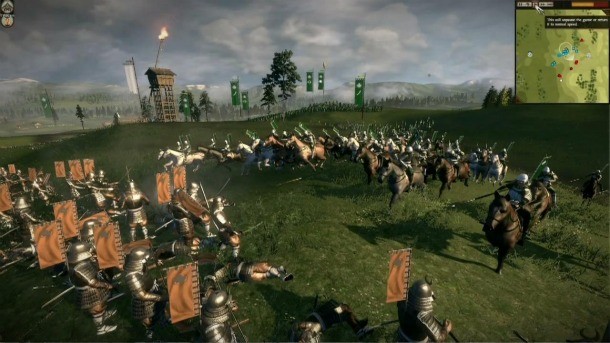
Total War (series)
Publishers: Activision, Sega, Electronic Arts
Original Release: Shogun: Total War, 2000
The first thing I should mention when writing about Total War is the series’ obvious debt to Sid Meier’s Civilization series, which pioneered the strategy genre and history-minded games in general. However, Civilization plays fast and loose with historical facts, technology, and time periods, disqualifying its games from being “period pieces” proper.
The Creative Assembly’s Total War series took the foundation laid by Meier, added real-time strategy battles, and an impressive degree of historical accuracy to the mix. The first game Shogun: Total War, focused on warring clans in the feudal era of Japan, even using strategies from Sun Tzu’s strategic tome The Art of War. Subsequent Total War games have embraced a myriad of eras, including ancient Rome, medieval Europe, and the Imperialist expansion of the 18th and 19th century. Players are forced to balance the demands of diplomacy, politics, and economics while overseeing military operations in real-time that feature armies using the weapons of the times. It’s a heady brew that proved perfect for gamers looking for something a bit deeper than your average shoot ‘em up.
All the games are held together by Creative Assembly’s exhaustive research and commitment to accuracy, making the Total War series the history buff’s video game of choice.
Next Page: Medal of Honor: Allied Assault
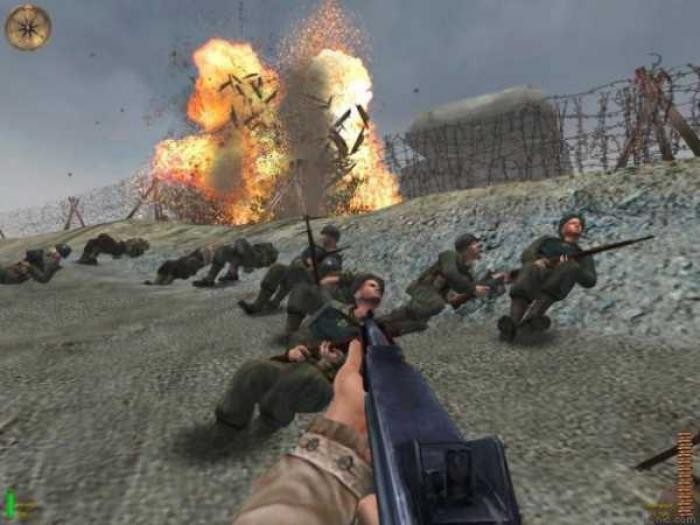
Medal of Honor: Allied Assault
Publisher: Electronic Arts
Release: 2002
Medal of Honor: Allied Assault wasn’t the first video game set in World War II, but it built on the foundation of the first two Medal of Honor console titles to truly deliver a cinematic, gripping recreation of the storied conflict.
While the game followed exploits of Lt. Mike Powell into a number of different theaters of the war, spanning the globe from north Africa to Norway, the sequence that made Allied Assault a classic was the Operation Overlord level, which threw gamers into the Allied forces legendary Omaha Beach landing in Normandy.
Taking many cues from Steven Spielberg’s 1998 film Saving Private Ryan, Allied Assault’s Omaha Beach was like nothing we’d ever seen in a game before. As your boat approached, a comrade in arms succumbs to tension, throwing up on the floor. When the door opens, you’re plunged into the cold waters and the total madness of war. Bullets and explosions are everywhere. For most of us, the chaos was hard to comprehend at first. Still, no video game battle I’ve experience to this day has been more satisfying. This wasn’t like reading about history, it gave you the illusion you were experiencing it firsthand.
I remember when EA first showed a real-time demonstration of Omaha Beach at E3, the line to get in wound around the company’s booth. Hustling a few contacts I had at EA, I managed to see it three times during the show. By the time the show was over, it was clear that Allied Assault was going to be a phenomenon – one that’s continued through the subsequent work of developer 2015, whose key members eventually left to form a little company by the name of Infinity Ward.
Never before had history been made so vivid and real in a game. Every military shooter that followed is in its debt.
Next Page: Grand Theft Auto: Vice City
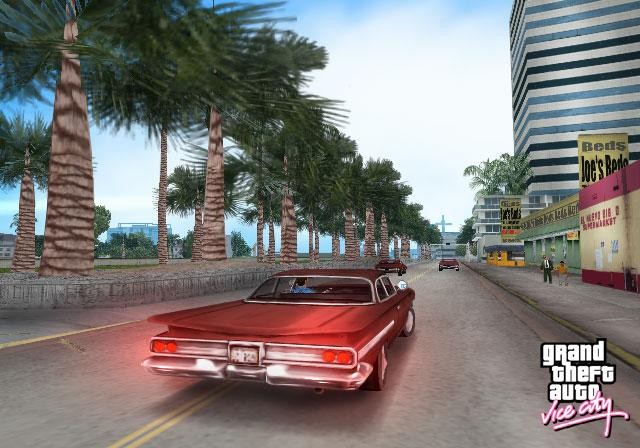
Grand Theft Auto: Vice City
Publisher: Rockstar Games
Release: 2002
While Vice City is not real, nor are the characters that populate Rockstar’s simulacrum of 1980s Miami, the second in Rockstar’s GTA trilogy on PlayStation 2 was the first game to prove that not only could a time period add to the gamer’s experience – it could actually be a major part of its appeal.
Yes, the city is fake, but Rockstar’s amazing feel for real-life ‘80s popular culture, fashion, and music was very real. From the clothes to the cars, Vice City was like stepping out of a time machine into the tacky, vibrant decade of excess. Protagonist Tommy Vercetti favored a pastel wardrobe that recalled Don Johnson’s character from the TV show Miami Vice. In his adventures through the cocaine-infested criminal underground of Vice City, he encountered a menagerie of ‘80s archetypes, including sleazy lawyers, wasted hair metal rock stars, and pornography stars. Even the game’s loading screen, which encouraged to put in a cassette tape (a nice nod to ancient home computers) and then displayed a garish, pixelated Rockstar logo, was period authentic.
Perhaps the most notable part of Vice City’s ‘80s vibe was the game’s soundtrack. Organized by in-game radio stations concentrated on a specific genre, the tracklist managed to incorporate almost every genre of popular music in the ‘80s. New wave curiosities like Frankie Goes to Hollywood rubbed elbows with Iron Maiden and Grandmaster Flash. The hip-hop station even featured the talents of pioneering New York City radio DJ Mr. Magic, adding another level of authenticity. The soundtrack was so popular with fans it was eventually released as a seven-CD box set.
This was Rockstar’s first attempt at a period piece, something the company has since mastered – as you’ll see later in this list.
Next Page: Assassin's Creed

Assassin’s Creed series
Publisher: Ubisoft
Original Release: Assassin’s Creed, 2007
Okay, here’s where my I totally reverse my previous reasoning about disqualifying games with science fiction from this list. Hey, if you have a problem with it, go write your own. The simple fact is that I couldn’t in good conscious omit the Assassin’s Creed series from list devoted to video game period pieces. To do so would do a disservice to Ubisoft Montreal’s amazing devotion to recreating historical cities like Jerusalem, Venice, and Rome.
Walking the streets of any of the cities in the Assassin’s Creed may be the closest any of us will get to experience what life was like centuries ago. The detail is amazing; so many real historical figures and landmarks are recreated in the games that playing one can be a history class in itself. While Ubisoft definitely plays fast and loose with the details – Leonardo Da Vinci wasn’t really an annoying ancient version of Q from the James Bond films – even some of the most ludicrous plot points (the supposedly centuries long conflict between the Templars and the Assassins) are based on real history and legend.
When I think of Assassin’s Creed, I always remember a story my colleague Matt Miller told me about playing AC II. He was attempting to find all the hidden glyphs in the game, which are usually located on real-life monuments or landmarks. Despite all his best efforts, there was one glyph, located on a small church, that eluded him. Though the game gave him a picture and the name of the house of worship, he couldn’t find it. In a moment of inspiration, he decided to download a tourist map of Venice, which he then cross referenced with the in-game map and some landmarks he could easily find in the game (like the Ponte Vecchio bridge). After finding the real-life church on the tourist map, he plotted a point where he thought it should be on the onscreen map. Sure enough, the church was in the exact place it was in real life, and the last glyph was his. That kind of attention to detail is unprecedented in game history, and one of the big reasons why Assassin’s Creed has become a beloved franchise.
Next Page: The Saboteur
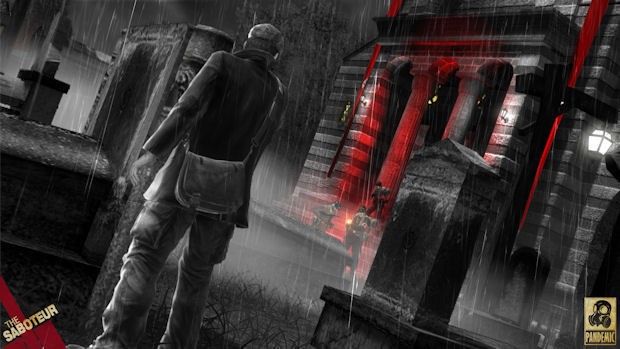
The Saboteur
Publisher: Electronic Arts
Release: 2009
While World War II might be the most well-used time period in gaming, Pandemic’s The Saboteur took an interesting take on the conflict. Instead of showing you the war from the battlefield, the game depicted the struggles of the people who suffered through the Nazi occupation of Europe, in this case France.
The game told the tale of fictional character Sean Devlin, an Irish racecar driver who is thrown into the events of the war through a series of events surrounding being cheated out of race victory by a Nazi colonel. As Sean seeks revenge, he finds himself embroiled in the real historical events that occurred in France during the war, including the French Resistance and the efforts of British secret operatives to undermine the Nazi’s control of the region.
As a game, it had its flaws, but The Saboteur remains an amazing period piece. As you explore Paris, the French countryside, and parts of Germany, you begin to get a sense of what it was like to live under the thumb of fascism. The most innovative part of the experience is developer Pandemic’s use of color. As you strike against Nazi oppression, areas of the city are transformed from the black and white of old movies to full, vivid color.
Like some of Rockstar’s titles, The Saboteur isn’t factually accurate, but does a tremendous job of capturing the atmosphere and feel of a very specific moment in history.
Next Page: Red Dead Redemption
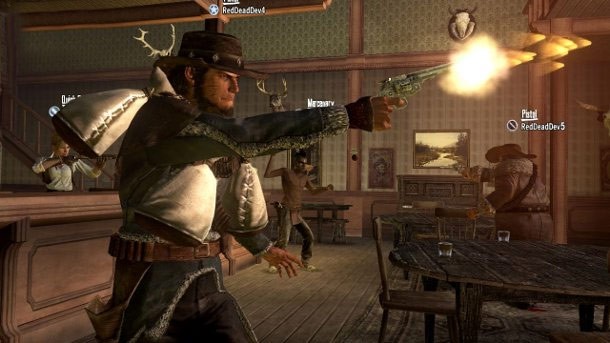
Red Dead Redemption
Publisher: Rockstar Games
Release: 2010
Here is another amazing period piece from Rockstar, a game that has become an all-time favorite for many, myself included. It’s another example of the company’s understanding of how compelling an era of history can be, and its single-minded obsession with bringing those eras to life in painstaking detail.
By 2010, the western was barely alive in Hollywood, much less the game industry, which had rarely embraced the Wild West. Many industry obververs wondered if Rockstar’s Red Dead Redemption, a spawling open-world opus based on the oddball Red Dead Revolver, would be marketable to today’s audience.
What resulted was another breakout sensation for Rockstar. As players began to experience the saga of laconic protagonist John Marston, many began to discover that the game’s ultimate thrill was the world itself, the game’s fictionalized recreation of the American Southwest and Mexico (here called New Austin, Nuevo Paraiso, and West Elizabeth). In Rockstar tradition, the locales weren’t real, but the feel was as authentic as the desert dust on John Marsten’s boots. For many, the game’s mission became forgotten in favor of the thrill of exploring the vast expanse of the west, shooting at animals and encountering side missions given out by a rogue’s gallery of Wild West characters.
Each small town felt like a classic western movie town, complete with saloons and general stores. They were populated by some of the most memorable folks you’ll ever meet in a game, including conman Nigel Dickens and Irish, a reprobate drunken weapons dealer.
Red Dead Redemption did more than just recreate the Wild West, it also served as a eulogy of sorts. Rockstar San Diego set the game not in the heart of the era, but at the end, 1911 to exact. All around the edges of the game, you see hints of the modern world creeping in, from automobiles to telegraph lines. Soon, the frontier would be closing, and its passing would see the end of the era of the outlaws, pioneer farmers, and lawmen that populated it. However, for a couple dozen hours, we all got to experience it in all its glory.
Next Page: Mafia II

Mafia II
Publisher: 2K Games
Release: 2010
2K Games, the parent company of Rockstar, showed that its star developer wasn’t the only studio that could create an amazing period piece. Developed by 2K Czech, Mafia II built on the solid foundation of the original to deliver a truly compelling organized crime tale set in the ‘40s and ‘50s.
Mafia II centered around the saga of Vito Scaletta, an Italian immigrant to the fictional city of Empire Bay who becomes involved in the world of organized crime following his service in World War II and the tragic death of his father.
Empire Bay, as with most of Rockstar’s games, isn’t real, but it’s expertly crafted in the game to evoke the feel of cities like New York and Chicago in the time period. While it’s an open world game in concept, in practice it flows down a very linear path. This was disappointing to some gamers, but the decision did allow 2K Czech to devote substantial resources to really crafting the building and interiors in which the gameplay and cutscenes occur. Never before had we seen such detail in a period video game – all the objects in a room were expertly rendered and the character’s attire was authentic down to the last stitch.
The game also excelled in the audio department, with a breathtaking soundtrack of licensed songs form the period. This included such legendary music artists as The Andrews Sisters, Bing Crosby, Cab Calloway, Chuck Berry, and Bo Diddley.
Next Page: L.A. Noire

L.A. Noire
Publisher: Rockstar Games
Release: 2011
While L.A. Noire might not be the best game on this list, as a period piece it has no equal. Created in partnership between Rockstar (that name keeps popping up on this list) and Australian studio Team Bondi, the game marks the first time that Rockstar has set its sights on a real historical city, in this case 1947 Los Angeles.
As you would expect, no expense or effort was spared. Team Bondi scoured actual land plots and maps from the time to craft what its claims is an accurate street-by-street recreation of Los Angeles. Using a groundbreaking technology invented by Bondi subsidiary Depth Analysis, real human actors were used to animate and speak every single line of dialogue, clothed in attire borrowed from Hollywood costume houses with clothing that dated back to the early part of the 20th century.
The results were stunning. This was a Los Angeles that was scarcely imaginable to its residents today – there’s not a freeway in sight. Each storefront and interior was packed with period specific objects and products; no detail was too small to be slaved over.
The game’s story was also tied closely to the era – nearly all of the cases solved by the troubled detective Cole Phelps were pulled directly from the archives of newspapers like the Los Angeles Times. It turns out 1947 wasn’t so idyllic after all. From drugs to prostitution, the L.A. of the 1940s was teeming with corruption – some of which reached the highest levels of both the police department and society. All in all, it was a fascinating look back at an important time in history, and is a trip that those of us that played the game will never forget.

Get the Game Informer Print Edition!
Explore your favorite games in premium print format, delivered to your door.
- 10 issues per year
- Only $4.80 per issue
- Full digital magazine archive access
- Since 1991









